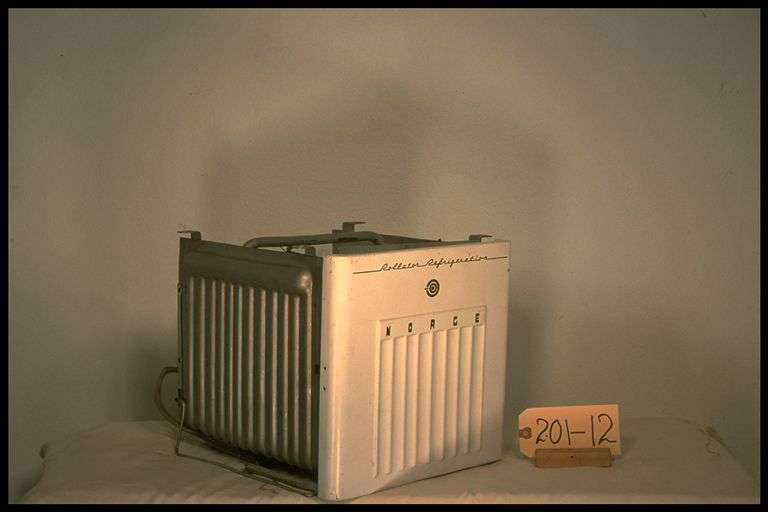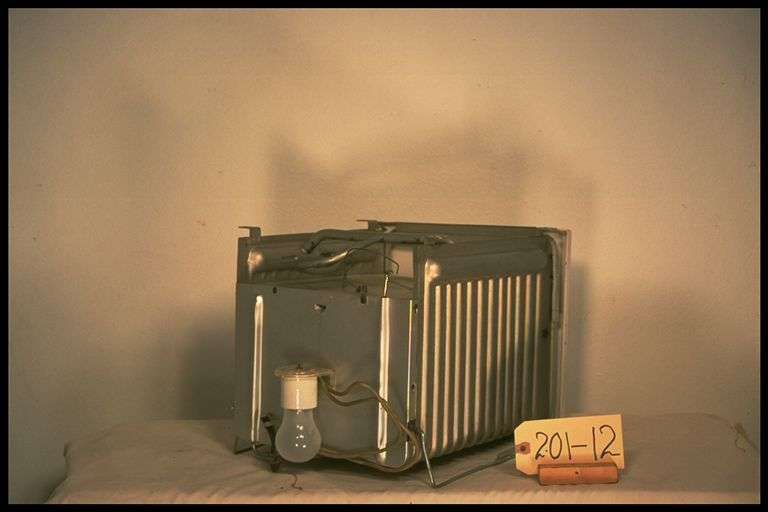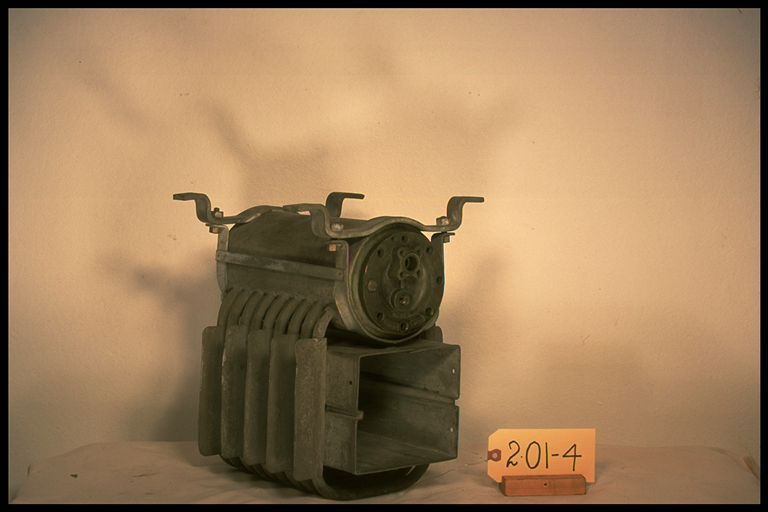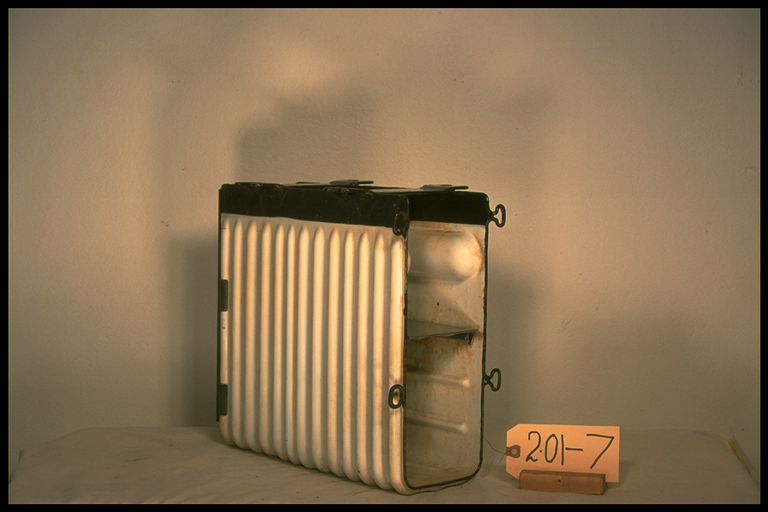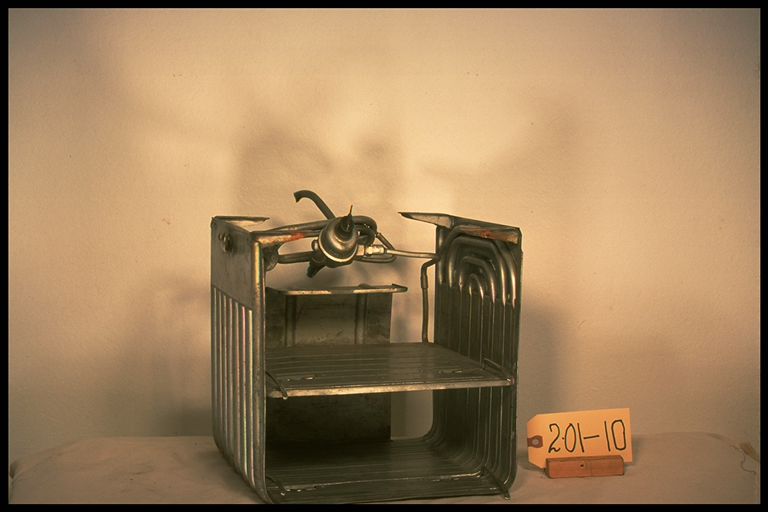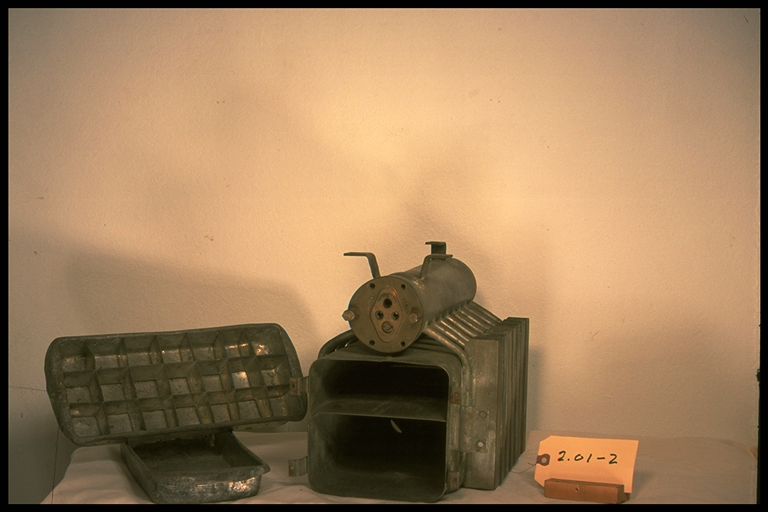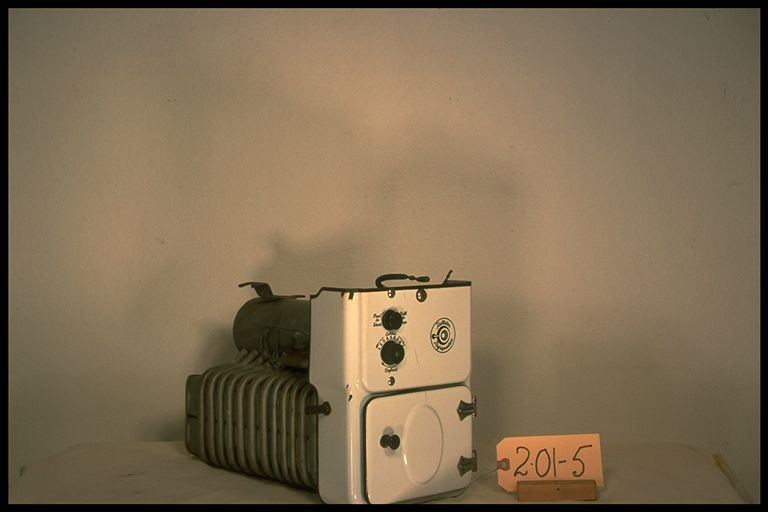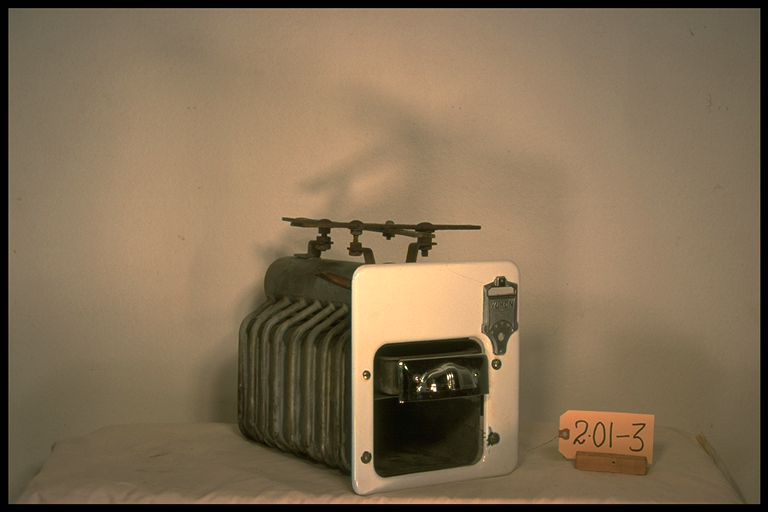2.01-12: Norge 1942 Household Refrigerator Cooling Unit
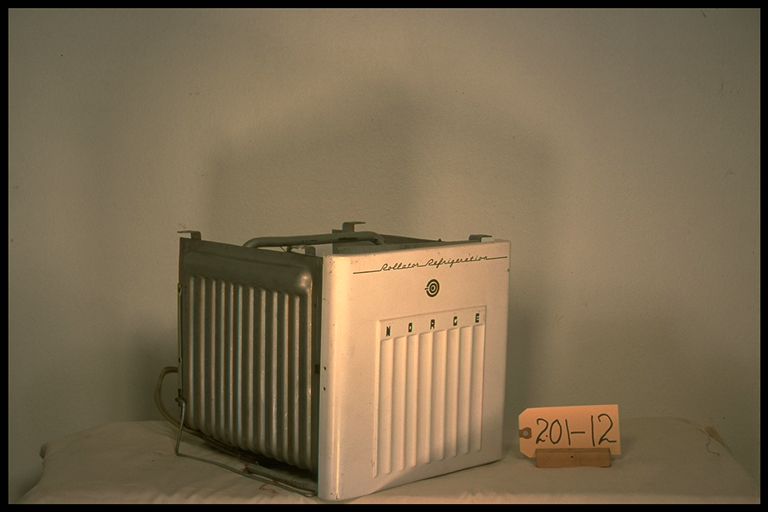
| HHCC Accession No. 2003.019 | HHCC Classification Code: 2.01-12 |
|---|
Description:
A precursor of the high style, amenity driven, frozen food, household refrigerator cooling unit of the middle years of the 20 th century, this one is equipped for capillary refrigerant flow control. It employs high conductivity, smoothly articulated surfaces, here executed in stainless steel, employing sophisticated engineering and manufacturing methods, here-to not available to the industry, Norge, 1942.
Group:
2.01 Refrigerating and Air Conditioning Evaporators - Household
Make:
Norge
Manufacturer:
Borg Warner Corp. Michigan
Model:
unknown
Serial No.:
unknown
Size:
11x 12x 11’h
Weight:
15 lbs
Circa:
1942
Rating:
Exhibit, education, demonstration and research quality
Patent Date/Number:
Provenance:
From York County (York Region) Ontario, once a rich agricultural hinterlands, attracting early settlement in the last years of the 18th century. Located on the north slopes of the Oak Ridges Moraine, within 20 miles of Toronto, the County would also attract early ex-urban development, to be come a wealthy market place for the emerging household and consumer technologies of the early and mid 20th century.
This artifact was discovered in the 1950’s in the used stock of T. H. Oliver, Refrigeration and Electric Sales and Service, Aurora, Ontario, an early worker in the field of agricultural, commercial and consumer technology.
Type and Design:
Demonstrated here, as in the case of Item 018, are the means by which the industry was moving beyond the troublesome fabrication of refrigerant evaporators in formed and rolled steel sheet, in order to form refrigerant passages. New grades of stainless steel, engineering and manufacturing methods are evident here, continuing the trend to more efficient heat transfer designs, in order to meet new performance standards and consumer interests in packaged frozen foods..
The major breakthrough by the industry, shown here, is in the use of capillary line flow control. A remarkably simple refrigerant flow control methodology, with out moving parts, it none-the-less requires very precise engineering and manufacturing control to ensure correct refrigerant charge and reliable operation .
Construction:
Material:
Special Features:
High style evaporator door in white porcelain, with gold monograph
Natural rubber door gasket in pigmented grey.
Rear mounted refrigerator light
Accessories:
Capacities:
Performance Characteristics:
Operation:
Control and Regulation:
Targeted Market Segment:
Consumer Acceptance:
Merchandising:
Market Price:
Technological Significance:
The significance of this specimen rests in its evolutionary context. It is part of the dynamic, rapidly changing pattern of developmental events that saw the Canadian refrigeration industry move beyond its crude, early offerings to the households of the nation and do so in a period of much less than two decades. Markers of the changing times evident here include: large, fast freezing surfaces for frozen foods, modern amenities and styling, along with technologically elegant refrigerant flow control methods.
Taking advantage of war time research and development in the aluminium industry, the industry would shortly move to its use, as the material of choice in the fabrication of household evaporators - but not with out considerable growing pains.
Industrial Significance:
See report #014 for the special contribution of companies like Borg Warner to the work of the Canadian refrigeration industry
Socio-economic Significance:
Socio-cultural Significance:
Donor:
G. Leslie Oliver, The T. H. Oliver HVACR Collection
